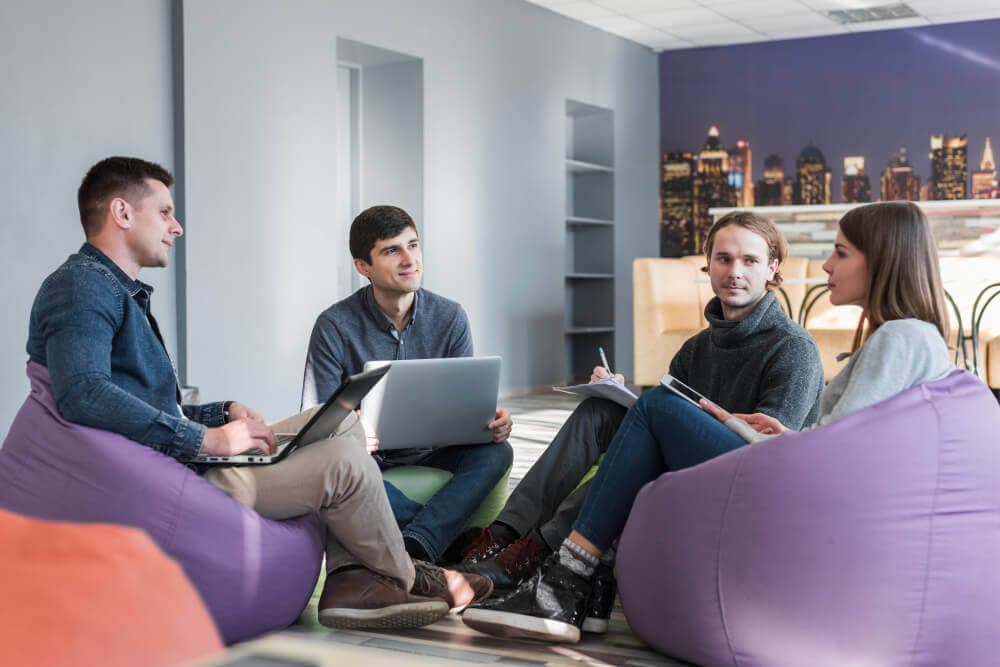In today’s fast-paced business world, innovation doesn’t happen in isolation. The best ideas are often sparked when people come together to share knowledge, challenge each other’s thinking, and combine skills. That’s why the concept of a collaboration space has become such an essential part of modern workplaces.
A well-designed collaboration space isn’t just about providing a table and chairs. It’s about creating an environment that encourages communication, creativity, and problem-solving – a place where teams feel inspired to think bigger and work smarter.
What Is a Collaboration Space?
A collaboration space is a dedicated area within an office (or a standalone facility) designed to foster teamwork. It’s set up to make it easy for people to gather, exchange ideas, and work together on projects. Unlike traditional meeting rooms, collaboration spaces are often more informal, flexible, and adaptable to different working styles.
They can range from open-plan lounges and breakout zones to tech-enabled huddle rooms with video conferencing capabilities. The goal is to make group work effortless, whether your team is all in one place or connecting virtually.
Why Collaboration Spaces Matter
1. Encouraging Cross-Functional Communication
When teams from different departments interact, it can lead to fresh perspectives and innovative solutions. A central space designed for collaboration breaks down silos and encourages spontaneous idea-sharing.
2. Boosting Creativity
Comfortable, inspiring surroundings can spark creative thinking. A good collaboration space combines functional design with elements that make people feel relaxed and open to new ideas.
3. Supporting Hybrid Teams
With hybrid work models becoming the norm, collaboration spaces often include technology for seamless virtual participation. This ensures remote team members can contribute just as easily as those on-site.
Key Elements of an Effective Collaboration Space
- Flexible Furniture – Movable tables, chairs, and whiteboards let teams reconfigure the space as needed.
- Technology Integration – Large displays, video conferencing tools, and shared digital workspaces help bridge in-person and remote collaboration.
- Natural Light and Comfort – Bright, airy spaces improve mood and focus.
- Acoustic Design – Soft furnishings, soundproofing, or dedicated zones help manage noise without killing the buzz of creativity.
- Accessibility to Amenities – Proximity to kitchens, breakout areas, and restrooms keeps energy and productivity high.
Designing for Your Team’s Needs
Not every collaboration space will look the same – it should reflect the culture and needs of your team. Creative agencies might prefer bold colours, writable walls, and lounge-style seating, while corporate teams may value a more structured setup with high-end AV equipment.
The most successful spaces are those designed with input from the people who will use them. Ask your team what inspires them, what helps them focus, and what makes them feel comfortable sharing ideas.
Beyond the Physical Space
Creating a collaboration space is also about fostering the right mindset. Encouraging open communication, mutual respect, and a willingness to experiment will make the space more effective. It’s about building a culture where collaboration isn’t just possible – it’s expected.
A thoughtfully designed collaboration space can be the heartbeat of a workplace, fuelling creativity, teamwork, and innovation. By combining flexible design, the right technology, and a collaborative culture, you can give your team the tools and environment they need to thrive.
At Workspace365, we create workspaces with collaboration in mind, ensuring your team has the perfect place to connect, brainstorm, and bring ideas to life.
